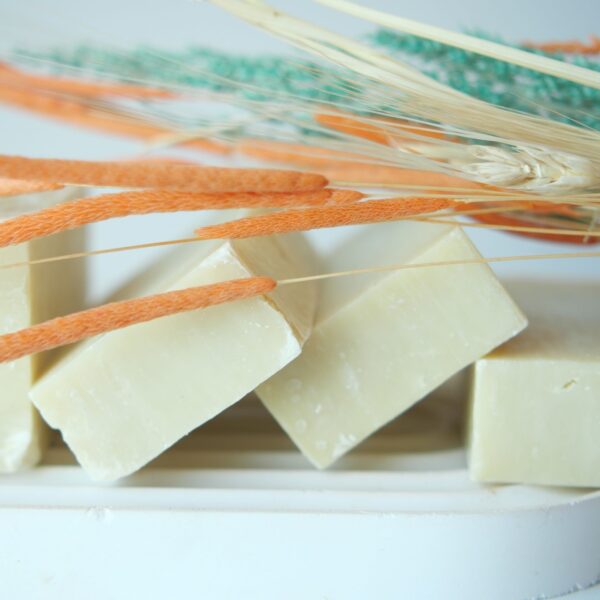Acetophenone is a colorless liquid with a sweet, floral, or orange-like scent. It is often used as a flavoring agent and fragrance in the food and cosmetics industries. Additionally, acetophenone is sometimes used as an intermediate in synthesizing pharmaceuticals, agrochemicals, plastics, and other chemicals. This article will focus on using acetophenone in cosmetics and personal care products.
What is Acetophenone?
Acetophenone is the simplest aromatic ketone (methyl phenyl ketone) and one of the classic aromatic carbonyl molecules for photochemical and spectroscopic studies. It is structurally similar to acetone, in which one of the methyl groups is substituted with a phenyl group. Acetophenone and its derivatives, especially chloroacetophenone, are commercially important aromatic ketones.
Source: Wikipedia
How is Acetophenone Produced?
Acetophenone occurs naturally in many foods, including apples, cheese, apricots, bananas, beef, and cauliflower.
It can also be prepared synthetically in the following ways:
- Through the acylation of benzene with acetic anhydride, this method’s yield can reach 85%.
- By reacting benzene with acetyl chloride, acetic anhydride, or acetic acid under the catalysis of aluminum trichloride.
- Benzoic acid method
- Multi-phase oxidation of ethylbenzene
Use of Acetophenone in Cosmetics & Personal Care
Acetophenone is a common ingredient in skin, body, and hair care products, used as a masking agent that covers the unpleasant scents of other ingredients, or is just a fragrance. It is also used in soaps, air fresheners, and detergents.
Applications in the Cosmetic Industry
| Function | Applications |
| Fragrance Agent | Acetophenone is a naturally occurring fragrant ingredient used in various personal care products to provide a pleasant smell to the formulation. Acetophenone is most commonly used to impart a fragrance of orange blossoms in perfumes, soaps, detergents, and lotions. Concentrations of acetophenone in these products can range as high as 2000 ppm in perfumes and as low as 20-50 ppm in detergents and lotions. |
| Masking Agent | Acetophenone functions as a masking agent, helping to reduce or mask the base odor or aroma of a product. |
Product Examples
| Type | Examples |
| Bath and Shower | Liquid Soap, Shower Gel |
| Fragrance and Perfumes | Perfumes, Cologne, Deodorant Spray and Sticks, Antiperspirants |
| Skincare | Creams, Lotions |
| Hair Care | Shampoos, Hairspray, Hair Conditioner |
Properties of Acetophenone
| Physical Form | Liquid |
| Color | Clear and colorless to light yellow |
| Odor | Strong fragrance. Many perfumers describe its smell as almond, orange, cherry, honeysuckle, jasmine, and strawberry, and they typically use acetophenone to accentuate powdery and sweet base notes. |
| Flavor Profile | Powdery, bitter almond cherry pit-like with coumarinic and fruity nuances |
| Shelf Life | 24 months or longer if stored properly |
| Storage Temperature & Conditions | Should be kept in closed glass or plastic bottlesStore below +30°C |
| Molecular Weight | 120.15 g/mol |
| Density @ {Temperature} | 1.028 g/cm3 |
| Molar Mass | 120.151 g·mol−1 |
| Viscosity, cps at {Temperature} | 1.681 mPa.s |
| Melting Point at 760.00 mm Hg | 19-20°C |
| Boiling Point at 760.00 mm Hg | 202°C |
| Flash Point | 105°C |
| Refractive Index at 20.00 °C | 1.53300 to 1.53600 |
| Specific Gravity at 25.00 °C | 1.02500 to 1.0320 |
| Solubility in Water | 5.5 g/L at 25°C 12.2 g/L at 80°C Soluble in acetone, and benzene; freely soluble in alcohol, chloroform, ether, fatty oils, and glycerol; slightly soluble in concentrated sulfuric acid. |
| Stability | – Stable – Incompatible with strong oxidizing agents, strong bases, and strong reducing agents – Combustible |
Recommended Storage and Handling
The product should be placed in a cool and dry place during transportation and storage, not close to a fire or heat source.
Acetophenone Formulation Considerations
Acetophenone may have limited solubility in specific formulations and tend to recrystallize or separate rapidly. For this reason, product formulations must choose appropriate solvents or emulsifiers to ensure that the compound disperses evenly and consistently in the cosmetic product. However, solubilizing agents may lead to other problems, such as causing cloudiness and turbidity in transparent formulations, skin irritation, and sensitization to light.
Combining certain compounds, such as DHEA (dehydroepiandrosterone), can help solve lipophilic compounds’ solubility problems. Another solution is to encapsulate lipophilic compounds in micelles of block copolymers. For example, poly(ethylene oxide-propylene oxide) diblock or triblock copolymers can solubilize lipophilic compounds.
Another common issue in fragrancing products is the high loss rate of fragrant compounds and their rapid decrease during storage due to volatilization, evaporation, oxidation, and poor stability. To counter this, use appropriate packaging, such as opaque or UV-resistant containers, and consider adding antioxidants or stabilizers to extend the product’s shelf life.
Safety and Regulatory Considerations
| FDA Information | Acetophenone is approved by the FDA as a direct food additive — primarily as a flavoring agent. The Flavor and Extract Manufacturers Association concluded that acetophenone is generally recognized as safe (GRAS). |
| EU Information | Acetophenone is an ingredient listed in commission with the function fragrance. However, it is not currently regulated by Cosmetic Regulation 1223/2009. It is listed in Annex VI/606-042-00-1 of CLP Regulation 1272/008, which states that it is harmful if swallowed, causes serious eye irritation, and may damage fertility. Unless exempted, the use of acetophenone is prohibited in cosmetic products in Europe. |
Health Effects of Acetophenone
- The Research Institute for Fragrance Materials (RIFM) has completed a safety assessment for this ingredient and concluded that acetophenone does not present a concern for skin sensitization (skin reaction involving red, bumpy, or itchy skin).
- Acetophenone can irritate the eyes or skin if it comes in contact. In high concentrations, it may cause mild narcotic-like effects. Acetophenone is flammable and explosive when exposed to very high temperatures.
Safety & Toxicity of Acetophenone
- Acetophenone is currently listed as a Group D carcinogen, indicating no evidence that it causes cancer in humans.
- The European Chemicals Agency (ECHA) published Spain’s intention to harmonize the classification and labeling (CLH) of acetophenone, a fragrance ingredient, as a category 1B reprotoxic substance. As per the agency, they state that acetophenone causes severe eye irritation. It may also affect fertility and could be harmful to unborn babies.
Identification Numbers
| Chemical Name | 1-phenylethanone |
| CAS Number | 98-86-2 |
| EC Number | 202-708-7 |
| JECFA Number | 806 |
| FEMA Number | 2009 |
Acceptable Limits or Maximum Usage
The maximum usage level of acetophenone in personal care products per EU regulations is as follows.
| Category | Usage Level |
| Perfume | 15-30 % |
| Eau de parfum | 10-14 % |
| Eau de toilette | 6-9 % |
| Eau de cologne | 3-5 % |
| Deodorant sticks | 1-3 % |
| Skin creams | 0.2-1 % |
| Shampoos, hairspray | 0.2-1 % |
| Deodorant sprays | 0.2-1 % |
Fun Facts About Acetophenone
- Acetophenone is a colorless liquid at temperatures higher than room temperature and a solid at temperatures lower than room temperature.
- Acetophenone is sometimes used in chewing gum.
Additional Resources
- Acetophenone – The Incide Guide
- Acetophenone – Cosmile Europe
- Acetophenone – PubChem
- Acetophenone – Wikipedia
- Acetophenone – Registered Dossier – European Chemicals Agency
- Acetophenone – European Chemicals Agency
- Acetophenone – United States Environmental Protection Agency
- Acetophenone – ScienceDirect
- Acetophenone – ScienceMadness
- Acetophenone – ChemBK
- Acetophenone – The Good Scents Company
- Acetophenone – Fragrance Conservatory
- Acetophenone – Fragrance Materials Safety Resource





